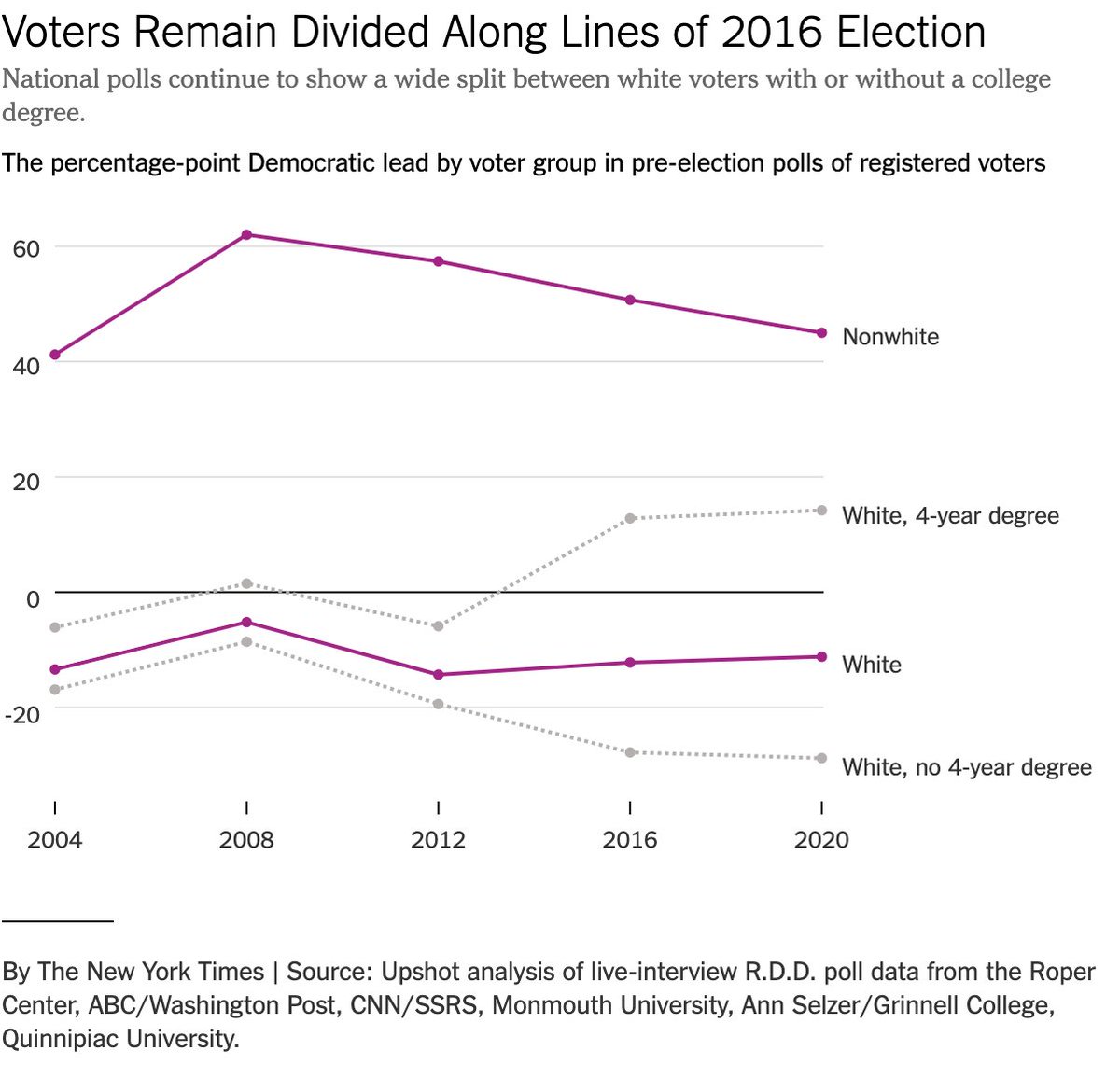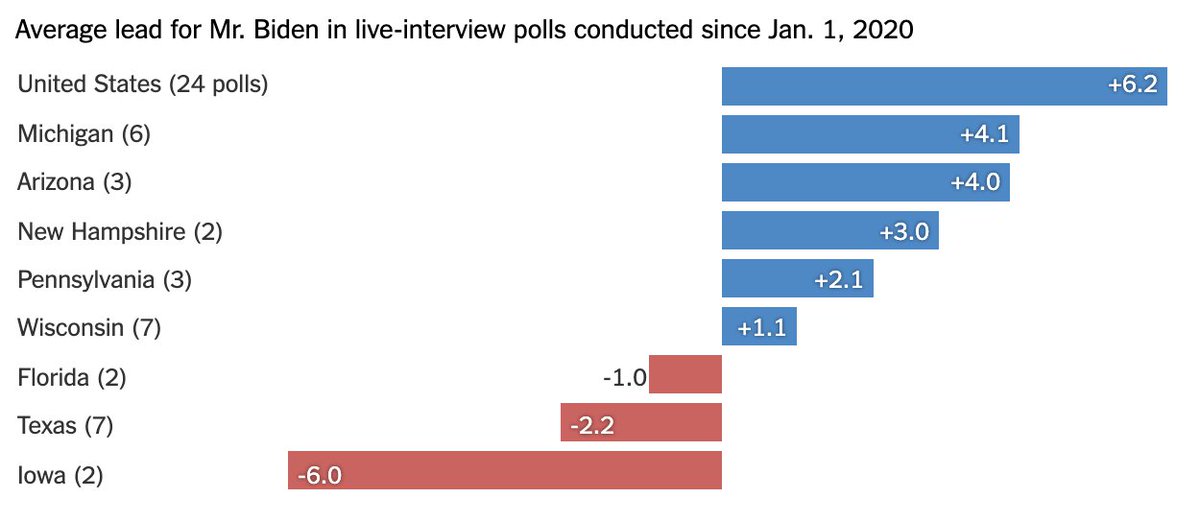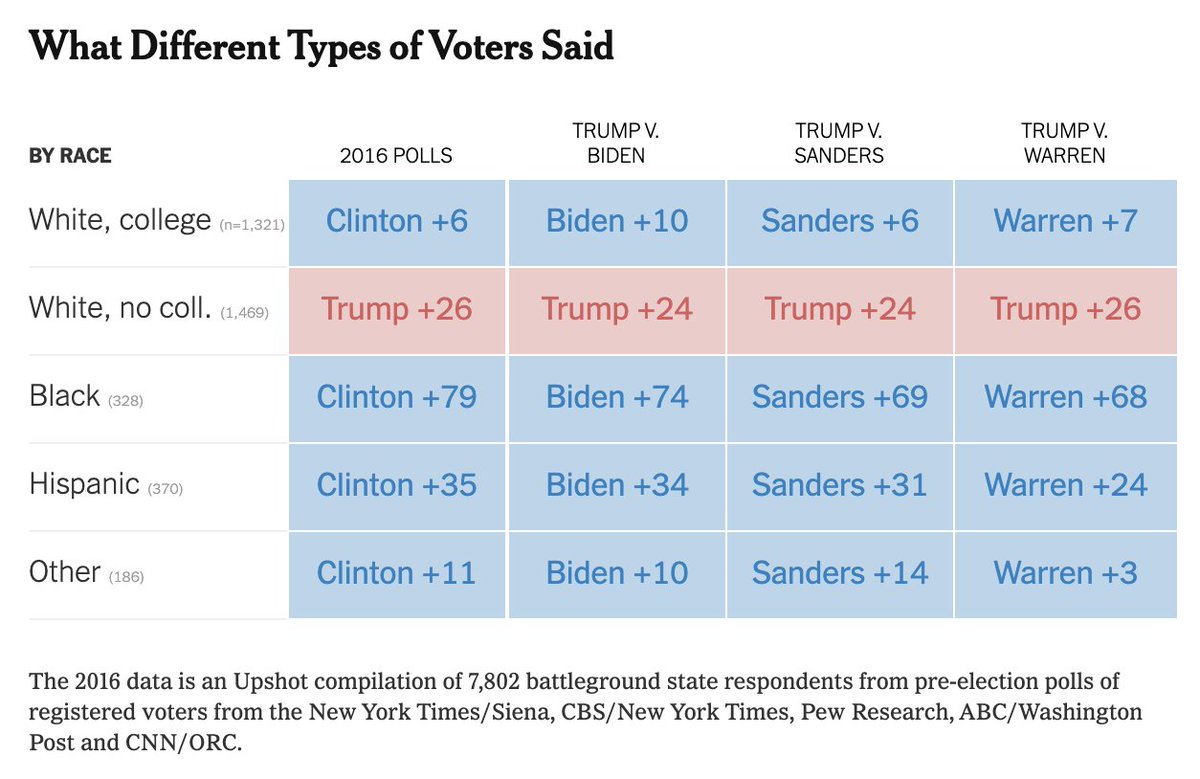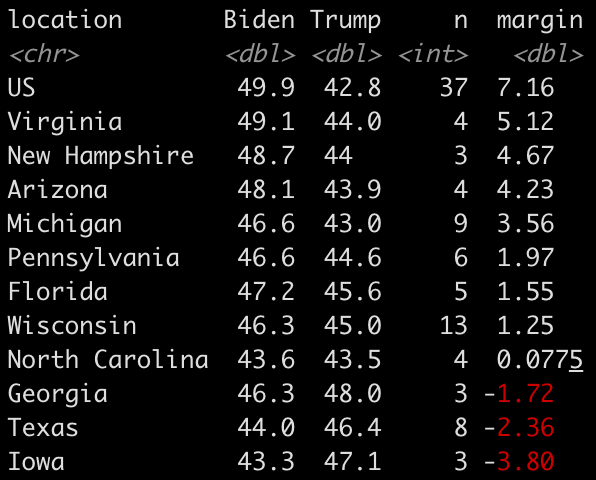Biden starts the general election with a lead in national polls, but it& #39;s closer than it looks. The polls show the electorate split along the same demographic lines as 2016, leaving Trump& #39;s relative edge in the Electoral College intact. https://www.nytimes.com/2020/04/13/upshot/polling-2020-biden-trump.html">https://www.nytimes.com/2020/04/1...
So far, national polls show virtually no change among white voters with or without college degree over the last four years. But Biden does appear to be doing quite a bit better among older voters and weaker among nonwhite voters
As an aside, a lot of the analysis that you see, suggesting that Biden is doing worse or better among so-and-so group, is based on cherry-picking or an apples-to-oranges comparison of national RDD polls to exit polls.
[clap emoji] it hasn& #39;t changed [clap emoji]
[clap emoji] it hasn& #39;t changed [clap emoji]
Trump& #39;s persistent strength among white voters without a degree means his relative advantage in the white, working class battleground states persists as well. Not much question that Trump continues to fare better in the battlegrounds than he does nationwide
And on top of this, these are polls of registered voters, not likely voters. Turnout& #39;s always a question but LVs are almost better for the GOP than RVs, and I& #39;d guess that will hold again.
Over all, Trump& #39;s probably doing 4 or 5 points--and perhaps more--among likely voters in the electoral tipping point states than he does among registered voters nationwide
I do think Arizona stands out as a possible bright-spot for Democrats. They would be better off if they had a breakthrough in Florida, instead or as well, which I wouldn& #39;t really rule out given Biden& #39;s strength among older voters and the sparse polling there to this point
The older voter thing interests me. It& #39;s hard to explain and maybe Biden+10 among over 65 will prove to be noise.
It& #39;s partially compositional change: Trump led by just 2 pts among voters over age 61 (65 now), with Clinton ahead among voters age 61-65 in 2016
It& #39;s partially compositional change: Trump led by just 2 pts among voters over age 61 (65 now), with Clinton ahead among voters age 61-65 in 2016
At the same time, the more conservative "Silent Generation" is getting old enough to start departing the electorate in greater numbers. Together, I suspect Clinton was quite competitive among voters who were over age 61 in & #39;16 and alive today, and maybe even won them
One point that didn& #39;t make the cut, due to lack of *recent* evidence: I think most of Biden& #39;s weakness among nonwhite voters, compared to Clinton, is among black voters and maybe especially young black voters. If so, harder to envision far higher black turnout, Dem GA/NC breakout
Hard to see it in recent national polls, which often don& #39;t breakdown by race. But it was there in our Times/Siena battleground polls in October, which had the same demographic story we see in national polls today
Another, easy to over-look factor in Biden& #39;s declining strength among nonwhite voters as a whole is the growing non-black share of nonwhite voters. Non-black nonwhite voters (Hisp/Asian, etc) tend to be more competitive than black voters and are a larger share of new registrants
I also like looking at a longer window for state polling, post-Dem impeachment inquiry on 9/26, for a bigger n. Here& #39;s what that looks like

 Read on Twitter
Read on Twitter





